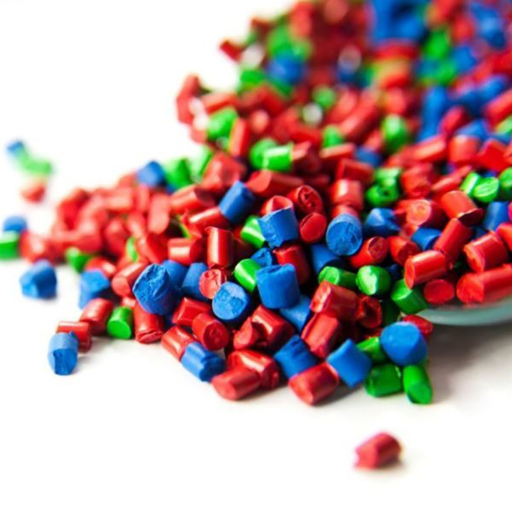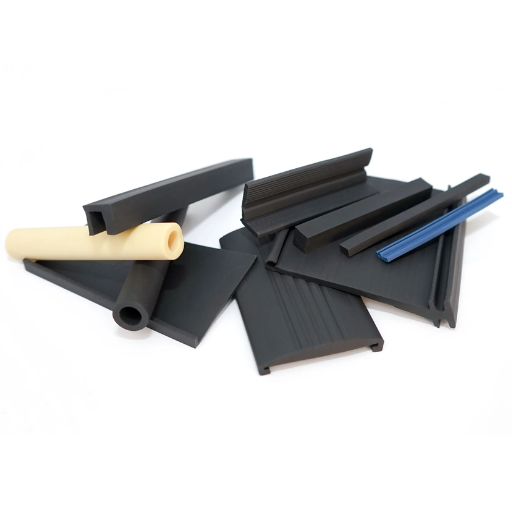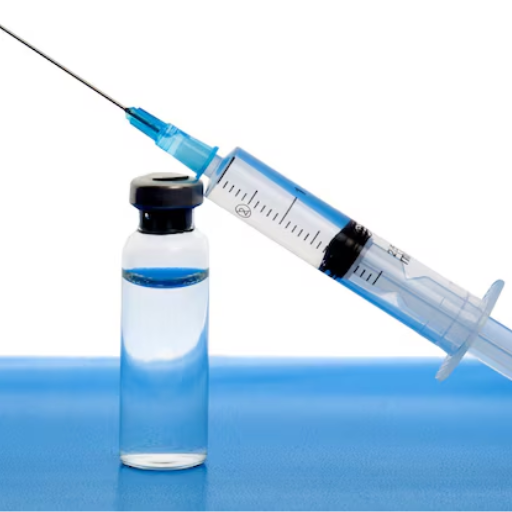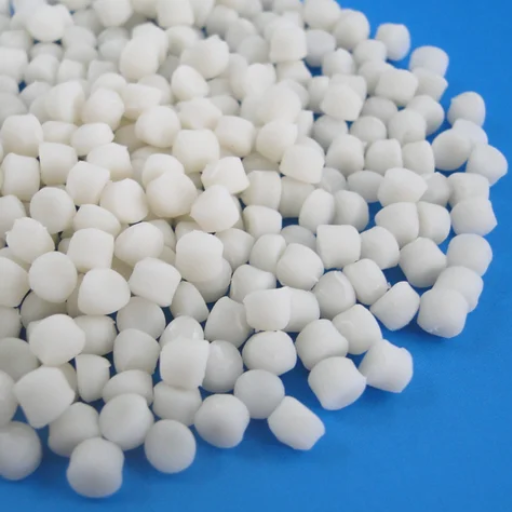The unique properties of thermoplastic vulcanizates (TPVs)—flexibility, durability, and recyclability—are attractive for use in many industries. However, as car parts and medical devices incorporate TPVs, concerns around their health risks have surfaced. Are TPVs safe for consumers and manufacturers? This piece aims to analyze the safety of TPVs, focusing on their composition, regulation, and the latest evidence regarding their effects on human health.
What Are Thermoplastic Vulcanizates (TPVs)?

Thermoplastic vulcanizates (TPVs) are a class of engineered materials that combine elastomers and thermoplastics. This class of materials, TPV, contains both plastic and rubber, resulting in a material that is flexible and elastic, yet can also be processed and reshaped like a thermoplastic. The primary method for fabricating TPVs is through dynamic vulcanization, where the rubber phase is cross-linked while it is dispersed in the thermoplastic matrix. In addition to their environmental advantages, TPVs are widely used in the automotive, medical, and consumer goods industries due to their remarkable performance, durability, heat resistance, and ability to be repeatedly melted and reshaped.
Definition and Composition of TPVs
TPVs, or Thermoplastic Vulcanizates, are a special form of thermoplastic elastomers (TPEs) that possess both elasticity and ease of processing. They usually consist of cross-linked EPDM rubber, an elastomeric phase, within a thermoplastic dome made of polypropylene (PP), with the elastomeric phase finely dispersed. Within a polypropylene (PP) semicrystalline thermoplastic matrix, ethylene propylene diene monomer (EPDM) rubber) is crosslinked, forming an elastomeric phase; this is referred to as dynamic vulcanization. This process gives TPVs the strength and resilience of rubber while retaining their easy processing characteristics.
With these features, TPVs possess other beneficial properties, including excellent elasticity, durability, enhanced thermal stability, resistance to oils and chemicals, and long-lasting, seamless performance. Moreover, developments in the formulation of TPVs have led to improved issues, such as higher temperature tolerances and additional resistance to abrasive wear, which helps in their application for sealing automotive parts and under the hood. Furthermore, newer developments have emphasized sustainability by increasing the recyclability of materials, introducing bio-based crude oil, and making thermoplastic vulcanizates more eco-friendly to serve the needs of modern industrial advancements better.
Properties of Thermoplastic Vulcanizates
Due to the unique combination of properties in thermoplastic vulcanizates (TPVs) that stem from their dual-phase structure of rubber and thermoplastic, they exhibit astounding mechanical properties such as flexibility, suppleness, and fatigue resistance, making them ideal for repeated dynamic operations like gaskets, weather seals, and bellows. They are also well-known for their high thermal stability and can operate in temperatures ranging from -40°F to 300°F (-40°C to 150°C).
In comparison to other elastomers, TPVs offer greater resistance to oils, greases, and fluids used in automobiles, thus assuring extended life in hostile environments. Their low compression set offers sealing efficiency over a long period, which is vital in thermally or mechanically stressed environments. In addition, TPVs differ from conventional rubber materials because they have a lower density, which is advantageous for reducing weight in industrial and automotive applications.
Considerable progress in formulating TPVs has resulted in improved processing characteristics. Standard thermoplastic equipment, such as injection molding, extrusion molding, and blow molding, is sufficient for processing TPVs. This, along with the ease of mass production, leads to low cost and waste. The new TPVs being developed are designed to resist ozone and UV rays, making them suitable for outdoor and weather-exposed applications.
Applications of Thermoplastic Vulcanizates
Due to their elasticity, durability, and processability, thermoplastic vulcanizates (TPVs) are used in a wide range of industries. In the automotive industry, one of the major consumer applications of TPVs includes seals, gaskets, weatherstrips, and other automotive interior components. In automotive applications, such as air ducts and tubing, the materials TPV is made of can withstand harsh environmental conditions, including heat, oils, and other stresses, without suffering any damage.
In the construction industry, branding TPV is a revolution. Because of these materials’ harsh environment withstanding properties, TPV plays a vital role in roofing membranes, sealing windows, and making expansion joints. TPV also benefits the consumer goods industry because grip, handles, and footwear parts can be made ergonomically, thanks to the material’s soft feel along with strong mechanical properties.
Due to the harsh rules governing TPV materials, the medical and healthcare industries also benefit. The biocompatibility and stringent regulations in this area make it necessary for medical tubing, syringe plunger seals, and other devices that need flexibility to be made of these materials. Due to their medical use for TPV materials, other applications include electrical and electronic products, such as cable insulation or connectors, which require flammability and electrical insulation.
What Are the Health Risks Associated with TPVs?

TPVs are considered safe for their intended uses, but some health concerns may exist under certain circumstances. The processes of making and working with TPVs involve the manufacturing and processing of thermoplastics, which require heating plastics. During the heating process, the emission of fumes and particulates can irritate the respiratory organs, skin, and eyes. If these emissions are not adequately captured and controlled, individuals exposed for an extended period or to repeated emission cycles may experience adverse health outcomes. Furthermore, the uncontrolled placement of TPVs may result in harm to the surrounding ecosystem. This will, in turn, pose a threat to human health by emitting pollutants in the air, soil, or water. Adopting proper safety measures allows the elimination of risk factors, for example, adequate ventilation and the use of personal protective equipment greatly assist during the processing of TPVs.
Potential Toxicity of Rubber Particles in TPVs
The potential danger of rubber particles in thermoplastic vulcanizates (TPVs) is concerning due to their impact on health and the environment. Studies show that fine dust created from the abrasion or damage of TPVs, primarily through mechanical means or thermal stress, can contain PAHs and phthalates, which are known to be toxic. These compounds have been shown to disrupt endocrine function, cause breathing complications, and have many other adverse effects if the concentration exceeds limits set by regulations.
Moreover, researching micro and nano-sized rubber particles demonstrates their enduring persistence in the environment thanks to their superior resistance to biodegradation. These particles pose an even greater danger as they can capture and carry dangerous pollutants, which increases the chances of bioaccumulation in the water and food chain. The threat of these particles to humans, whether by breathing or eating, is still not fully explored, which makes further research essential.
Effects of Chemical Resistance in Medical Applications
Chemical resistance is a crucial quality of materials in medical applications, considering service life, structural integrity, and exposure to disinfectants, body fluids, and strong cleaning solvents. Advanced thermoplastic elastomers and other specialized polymers offer high chemical resistance to harsh treatments, which is very desirable for catheter tubing, medical gaskets, and housings for diagnostic equipment. The use of materials such as TPVs and polyurethanes greatly limits the possibility of material degradation and contamination, thereby significantly enhancing patient safety and device effectiveness. Chemically resistant materials used in the medical field maintain their reliability in structure and function after frequent sterilization cycles, such as those using ethanol or isopropyl alcohol.
Long-term Exposure Risks to TPV
Thermoplastic Vulcanizates (TPVs) combine elasticity with unique, ultra-durable, and heavy-duty, chemical-resistant qualities, making them incredibly useful. However, exposure to environmental stress for longer durations can change their material structure and properties. Cracking at the surface, fading colors, and a weakening mechanical structure are some differences observed due to prolonged exposure to UV radiation. These changes are usually accompanied by surface deterioration. Additionally, high temperature and oxygen-rich surroundings can further stiffen the material, hindering elasticity and making the final structure less useful. These surfaces can also erode continuously when exposed to harsh, aggressively corrosive chemicals, such as solvents or certain fuel oils, resulting in degradation of TPV parts. This clearly illustrates the importance of performing material tests intended for simulated long-term conditions, as it helps in designing and testing TPV components.
How Do Thermoplastic Vulcanizates Compare to Traditional Rubber?

Compared to ordinary rubber, thermoplastic vulcanizates (TPVs) provide unique benefits in specific uses. Traditional rubber requires TPVs to be cured, whereas the latter does not, because it possesses the elasticity of rubber combined with the simplicity of processing similar to thermoplastics. TPVs are not only lightweight but also recyclable and can be reprocessed, making them more eco-friendly. In addition, TPVs are more resistant to heat, chemicals, and weather, which improves their durability. Traditional rubber TPVs still lack in some areas, such as elasticity and resistance to extreme temperatures. The need for high durability also encompasses this. The choice between TPVs and traditional rubber depends on the specific requirements of the application.
Mechanical Properties of Thermoplastic vs. Vulcanized Rubber
The soft and hard phases of thermoplastic elastomers blend give them a unique mechanical behavior. Their tensile strength and resistance to permanent deformation are lower than vulcanized rubber, which means TPEs are more likely to undergo deformation due to mechanical stress. TPEs make up for this lack of resistance with their flexibility, while also being lightweight, which allows for a broader range of uses, such as in the automotive and other consumer products.
The process of cross-linking with sulfur captures rubber and increases its mechanical stability. This is known as vulcanization. Rubber that has gone through this process is ideal for industrial purposes, such as heavy-duty tires, seals, or gaskets, because it can withstand long periods of tension without shrinking or being damaged. In addition, Vulcanized rubber can also endure abrasion, which increases its durability and usability in industrial applications.
Moreover, a detailed analysis of mechanical characteristics reveals the distinctions in break elongation and hardness. It is more likely for TPEs to have higher elongation but lower hardness, which further leads to less thixotropic demand in soft applications. On the other hand, Vulcanized rubber offers greater structural integrity but less elasticity in extreme conditions. This, however, increases the difficulty of production, lowers the ability to recycle, and uses more complex means of production.
Elasticity and Durability of TPV
When considering thermoplastic vulcanizates (TPVs) for industrial use, elasticity and durability are critical performance metrics. TPVs are unique in that they combine the elasticity of crosslinked rubber with the processing advantages of thermoplastics, providing superior resilience and fatigue resistance. These materials demonstrate excellent recovery under cyclic loading owing to the crosslinked elastomer domains within the thermoplastic matrix, which serve as stress-relief spaces. The mechanical properties of these materials are also greatly improved due to their resistance to environmental aging, such as UV radiation and ozone, as well as their ability to withstand a wide range of temperatures. Additionally, laboratory tests show that even with extended thermal exposure, TPVs retain a significant amount of tensile strength and elongation at break, bolstering the materials’ reliability for long-term applications in the automotive, industrial, and consumer goods sectors.
Environmental Impact and Recyclability
Unlike thermosetting rubbers, which are more challenging to recycle and have a greater environmental impact, thermoplastic vulcanizates (TPVs) have recently come to the fore in the materials industry as having a sustained competitive advantage because they are TPVs can be melted and remolded multiple times, optimizing the recycling process and minimizing the need for virgin materials. Recent industry analysis indicates that TPVs are more sustainable than thermoset polymers—non-recyclable because of their crosslinked structure—due to lower energy consumption during production and an increased ability to be recycled.
More recent innovations in mechanical and chemical recycling have optimized the reprocessing of TPV waste, making it possible to recover high-quality TPV with minimal degradation. This type of recycling aligns with global efforts to reduce waste, particularly in the automotive sector, where TPVs are widely used. Also, embedding biopolymers and biofillers into TPV blends can further broaden their eco-efficiency, representing a stride toward sustainable materials engineering.
What Are the Applications of Thermoplastic Vulcanizates in Medical Devices?

The combination of flexibility, durability, and chemical resistance makes Thermoplastic Vulcanizates (TPVs) exceptionally suitable for preparing medical devices. Reliable biocompatible components such as tubing, connectors, and seals are critical for medical-grade devices, which require stringent reliability standards. Because TPVs can withstand common sterilization methods, such as autoclaving, they are also favored for use in reusable medical devices. Along with these features, excellent fatigue resistance and ease of processing significantly reduce production costs without sacrificing performance requirements.
Usage of TPVs in Medical Products
The unique set of properties offered by TPVs makes them a preferred material for medical devices, given their exceptional performance and compliance with regulatory guidelines. Their main distinguishing feature is the ability to circumvent the elasticity of rubber, while still being thermoplastically processed. As a result, the manufacture of precision medical parts becomes easier due to the capability for extensive and detailed fabrication.
Also, TPVs have excellent resistance to chemicals, fluids, and sterilization agents, which makes them suitable for cleaning and sterile environments. Their compliance with medical-grade requirements, such as USP Class VI and ISO 10993, also strengthens their applicability in the industry. For example, TPVs are widely used in biocompatible and durable drug-delivery devices, catheter tubing, and plunger syringe components.
Another important consideration is their environmental impact. TPV’s medical-grade plastics can frequently be recycled after use, decreasing the waste produced by single-use medical devices. Coupled with low compression set values and superior tear resistance, these materials guarantee product durability even under demanding conditions, making them invaluable for both single-use and reusable medical devices.
Safety Standards for Medical Applications of TPV
The safety requirements of thermoplastic vulcanizates (TPVs) used in medical procedures are rigorous because patient safety is a priority. Some of these standard-setting bodies include the International Organization for Standardization (ISO) and the U.S. Food and Drug Administration (FDA). ISO standards, such as ISO 10993, of the biological evaluation of medical devices require extensive testing for biocompatibility to prove there is no risk of cytotoxicity, sensitization, or irritation. Also, following compliance with ISO 13485, which focuses on the Quality Management Systems of a product, ensures that the processes related to producing and providing the product are repeatable.
TPV materials approved by the FDA must undergo rigorous testing procedures, including exposure tests, sterilization compatibility studies, and chemical extraction analyses. Hence, there is absolutely no leachable hazard. TPV materials approved by the FDA must undergo rigorous testing procedures, including exposure tests, sterilization compatibility studies, and chemical extraction analyses. Hence, there is absolutely no leachable hazard. All medical-grade TPVs are also required to meet the standards outlined by USP Class VI, which pertains to tests for systemic toxicity, intracutaneous reactivity, and implantation effects.
Comparison of Silicone Rubber and Thermoplastic Elastomers
When comparing silicone rubber to thermoplastic elastomers (TPEs), focus on their material properties, processing methods, and suitability for applications. Silicone rubber excels in extreme temperature resistance, flexibility, and biocompatibility, making it ideal for high-performance and medical-grade applications. However, it requires curing and generally has higher production costs. On the other hand, TPEs offer greater versatility in processing since they are recyclable and can be molded or extruded using conventional thermoplastic equipment. While TPEs typically lack the same thermal stability and chemical resistance as silicone, their cost-efficiency and ease of manufacturing often make them a more practical choice for less demanding applications. The decision between the two materials largely depends on the specific requirements of the application.
How Are Thermoplastic Vulcanizates Reprocessed?

Extrusion, injection molding, and blow molding are standard methods for reprocessing thermoplastic vulcanizates (TPVs). During reprocessing stages, TPVs are mechanically heated to their melting point, which allows reshaping without significant loss of material properties. With the elastothermoplastic nature of TPV, a unique phase combination provides excellent recyclability. With proper handling, quality control, and material integrity within the reprocessing loop, all subsequent applications will be protected.
Methods for Reprocessing TPVs
Removal of specific physical or mechanical attributes without losing material efficiency can be termed as reprocessing in TPVs. Some of the key approaches are melt extrusion, injection molding, reprocessing, and selective pulverization. Cross-linked polymers, also known as thermoplastic vulcanizates (TPVs), are best achieved through melt extrusion. In this process, TPVs are heated above their melting temperature and pushed through a die to create continuous shapes or pellets. While this method is precise, it needs strict temperature control to avoid thermal degradation.
Injection molding reprocessing is a method where TPVs are remelted and injected under pressure. This method permits the creation of intricate configurations while maintaining the elastomeric properties of the material. Moreover, selective pulverization technology has recently improved the ability to separate different phases within TPVs, increasing the recovery rate and purity of the material.
Dynamic temperature regions and monitoring systems have furthered the effectiveness of the processes. Compliance with detailed quality control at every step of the operation, from grinding the material to analyzing the final product, ensures that the reprocessed TPVs are suitable for industrial use. These methods encourage the use of circular materials and address the needs for sustainable manufacturing.
Benefits of Recyclability in Thermoplastic Materials
The ability to recycle thermoplastic materials adds undeniable value to them, both economically and environmentally, making them valuable in contemporary industrial and manufacturing processes. Economically, reprocessing thermoplastics lowers the costs of acquiring raw materials, as the polymers already processed can replace virgin materials without compromising material quality. This is particularly beneficial for industries such as automotive and packaging that rely on large scale consumption of materials. Furthermore, advancements in recycling technology have led to the production of high-grade recycled thermoplastics that meet the industry’s stringent requirements.
Recycling thermoplastics decreases the amount of waste that goes to landfills, thereby addressing one of the significant gaps in global waste management. It also reduces the amount of energy used in the production process since recycling is less energy-intensive than making new polymers from fossil feedstocks. The increased energy efficiency helps lower the carbon footprint, supporting efforts to achieve sustainability goals. Research indicates that using recycled thermoplastics can decrease greenhouse gas emissions by as much as 50% compared to using virgin plastics.
Impact of Reprocessing on Material Properties
Reprocessing thermoplastic plastics can significantly impact their mechanical, thermal, and chemical properties. The materials may change molecular weight due to chain scission or oxidative damage with each reprocessing loop. This results in a reduction of tensile strength, elasticity, and impact resistance over time. Reprocessing also subjects materials to prolonged heat due to thermal exposure, which can further exacerbate the degradation of fillers or additives. Processes like the Melt Flow Index (MFI) analysis, used to evaluate viscosity and flow metrics, are essential for providing information about processability. As highlighted from the description, there is an urgent need to analyze material behavior after every cycle of reprocessing is done to ensure performance is achieved, especially when a high level of accuracy and precision is required. The use of stabilizing agents or compatibilizers can lessen these effects and result in greater impact, Tritan XL 50 loss, and longer-lasting thermoplastics.
What Are the Key Properties of Thermoplastic Vulcanizates?

Thermoplastic Vulcanizates (TPVs) exhibit a one-of-a-kind mix of elasticity and processability. They stand out. TPVs’ flexibility and resilience are similar to those of traditional rubber, plus the bonus of being easy to melt and remold like a thermoplastic. They possess high resistance to heat, chemicals, and abrasion, making them suitable for demanding applications. Weatherability and durability ensure long-term performance in varied environmental conditions; furthermore, their lightweight nature and TPVs’ enhanced appeal make them ideal for industries that focus on sustainability and efficiency.
Tensile Strength and Elastic Properties
Thermoplastic Vulcanizates (TPVs) possess impressive tensile strength and elastic properties. The versatility of this material is evident in a range of applications. Depending on the formulation and proportion of rubber to thermoplastic, TPV’s tensile strength is generally said to be between 6 and 15 MPa. These sustainable materials undergo immense mechanical stress without failure. Furthermore, TPVs also possess the ability to recover rapidly after deformation due to the cross-linked rubber particles trapped within the thermoplastic matrix. Enhanced flexibility and resilience are also features of TPVs that can surpass 400% elongation at break. Major applications, such as automotive seals, gaskets, and industrial components, among others, are showing a great use of TPVs due to the sturdy and long-lasting elastic properties they require.
Hardness and Thermal Behavior of TPVs
Based on their unique formulations and processing conditions, thermoplastic vulcanizates (TPVs) exhibit varying hardness properties, which are quantified using the Shore A and Shore D scales. As a result of accurate proportional blends of elastomeric and thermoplastic phases, the softness and texture meet predetermined application needs. Thus, lower hardness is connoted with increased elasticity and softer textures, while structural integrity and rigidity are associated with higher hardness levels.
In terms of thermal behavior, TPVs possess elastomer volatiles that improve thermal stability, supporting harsh temperatures between -40 and 125 degrees Celsius. The composition of a given TPV also affects the more severe temperature regions it can sustain. This performant thermal bond is a result of cross-linked elastomer particles, which add strength against permanent deformation from prolonged exposure to high temperatures. Furthermore, low coefficients of thermal expansion also add uniform stability when subjected to temperature changes, making thermoplastic vulcanizates ideal for automotive engine compartments and industrial machinery where precision is critical during use under high loads.
Cross-linking and the Rubber Phase in TPVs
Cross-linking is essential in the formation of thermoplastic vulcanizates (TPVs), especially in determining their mechanical and thermal properties. The rubbery phase in a TPV is usually cross-linked EPDM rubber, which significantly adds to the elasticity and recoverable deformation of TPVs. Cross-linking within the rubber phase occurs due to dynamic vulcanization during melt mixing. This is accompanied by an increase in elasticity and a decrease in flowability of the dispersed rubber particles, resulting in improved mechanical strength and thermal stability.
The morphology of the rubber phase is essential, since the amount of cross-linking achieved influences basic performance characteristics, such as tensile strength, elongation at break, and compression set. Modern scanning electron microscopy (SEM) and dynamic mechanical analysis (DMA) have shown that the optimal strength provided by cross-linking greatly enhances mechanical performance, allowing materials to bend or flex without breaking. This makes them suitable for high-performance industrial applications, such as sealing systems, gaskets, and vibration isolators. By manipulating the cross-linking parameters, it is possible to manufacture highly specialized TPVs for demanding industrial applications.
Reference Sources
-
Thermoplastic Elastomers: Emerging Trends and Applications in Rubber Manufacturing
- Key Findings: This study highlights the versatility of thermoplastic elastomers (TPEs), including TPVs, in various industries such as healthcare, automotive, and construction. It emphasizes the development of bio-based TPEs as sustainable alternatives to petroleum-based materials. The study also discusses challenges like material stability and recycling potential.
- Methodology: A comprehensive literature review and analysis of industry reports were conducted to evaluate the properties, applications, and emerging trends of TPEs.
-
Dynamically Vulcanized Thermoplastic Elastomers
- Key Findings: This paper focuses on the dynamic vulcanization process that enhances the properties of TPVs, making them suitable for replacing thermoset rubbers. It discusses the evolution of TPVs and their applications, particularly in the automotive sector, due to their elastic recovery and processability.
- Methodology: The study reviews the historical development and technological advancements in TPVs, emphasizing their industrial applications and performance characteristics.
-
Recent Developments on Thermoplastic Elastomers by Dynamic Vulcanization
- Key Findings: This chapter provides an overview of advancements in TPVs, focusing on their improved elastic recovery, processability, and low hardness. It highlights the role of crosslinking and compounding techniques in enhancing TPV properties.
- Methodology: The study compiles recent technological advancements and evaluates the impact of dynamic vulcanization on the performance of TPVs in various applications.
- Top TPV Plastic Pellets Suppliers in China
Frequently Asked Questions
Q: What are thermoplastic vulcanizates (TPV), and how are they used?
A: Thermoplastic vulcanizates (TPV) are a class of materials that combine the processing advantages of thermoplastics with the performance characteristics of rubber. They are widely used in applications requiring elastomeric properties, such as automotive seals, gaskets, and wire and cable insulation.
Q: Are there health risks associated with TPV materials?
A: TPV materials are generally considered safe for use in a variety of applications. However, potential health risks may arise during the manufacturing process if proper safety measures are not implemented. It’s essential to follow guidelines and regulations to minimize exposure to any hazardous substances.
Q: How does the dynamic vulcanization process affect the properties of TPV?
A: Dynamic vulcanization is a key process in the production of thermoplastic vulcanizates, where rubber is cross-linked within a thermoplastic matrix. This process enhances the physical properties of TPV, such as strength, elongation, and compression set, making them suitable for various demanding applications.
Q: Can TPV be recycled, and what are the environmental safety implications?
A: Yes, TPV materials can be recycled; however, the recycling process may vary depending on the specific formulation. Recycling helps reduce environmental impact by minimizing waste and promoting sustainable practices in the use of thermoplastic and rubber materials.
Q: How do TPV properties compare to those of traditional thermoset elastomers?
A: TPVs offer a unique combination of the flexibility and durability of traditional thermoset elastomers while providing the processing ease of thermoplastics. Unlike thermoset elastomers, TPVs can be remolded and reused, making them more versatile in various applications.
Q: What types of applications benefit from using TPV as opposed to other materials?
A: TPV is particularly beneficial in applications requiring a balance of rubber-like properties and thermoplastic processing, such as automotive components, outdoor equipment, and consumer goods. Their resistance to elevated temperatures and environmental factors makes them suitable for a wide range of applications.
Q: How does the composition of TPV affect its performance?
A: The performance of TPV is influenced by its composition, which typically includes a blend of thermoplastic materials (like polypropylene) and elastomers (such as EPDM rubber). The ratio and type of these components determine the overall physical properties and suitability for specific applications.
Q: Are there specific regulations governing the use of TPV in consumer products?
A: Yes, some regulations and standards govern the use of TPV in consumer products, particularly those that come into contact with food or are used in children’s toys. Manufacturers must ensure compliance with safety standards to mitigate any potential health risks associated with their products.
Q: What advantages do TPV offer compared to other thermoplastic elastomers?
A: TPV materials offer superior elasticity, resilience, and weather resistance compared to other thermoplastic elastomers. Their unique properties allow them to perform well in dynamic applications while being easy to process, which is a significant advantage in manufacturing.

